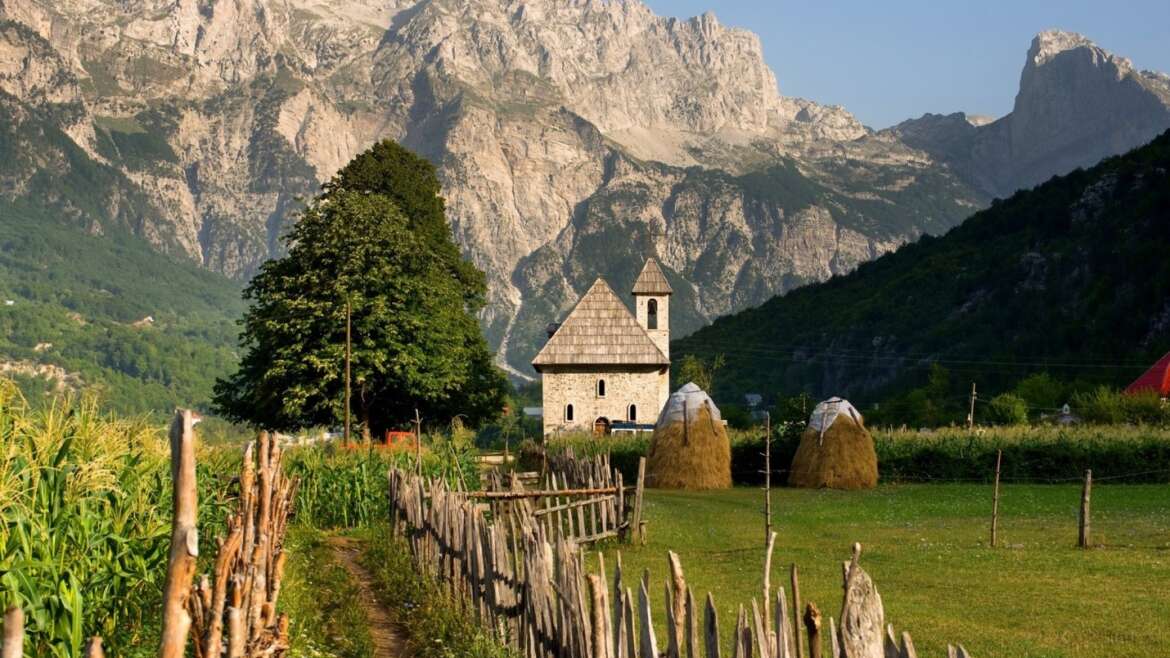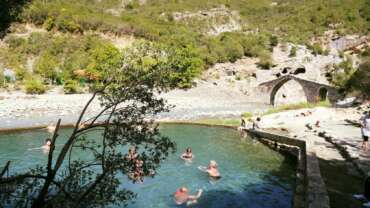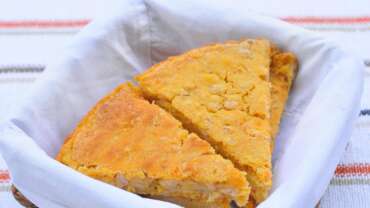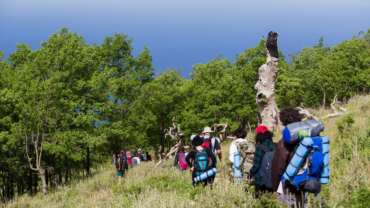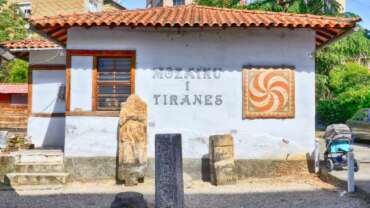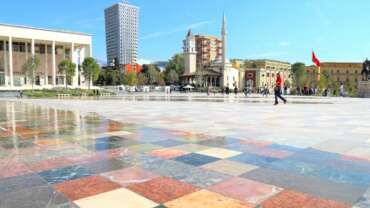Experiences in Albania
Religious Sites
The most-commonly practiced religion in Albania is Islam (mainly Sunni or Bektashi), the second-most-commonly practiced religion is Christianity (mainly Orthodox, Catholic and Protestant), however there are also many irreligious, people. Albania is unique in the religious tolerance it has traditionally provided, with spiritual places coming from different religions.
Though perhaps no other country in the world has seen such peaceful co-existence of so many of the world’s religions. Some Religious Sites of Albania Bektashi World Headquarters in Tirana The Bektashi Way is a mystical path whose goal is to perfect man’s soul. History reveals that Bektashism was founded by the Sufi mystic Hajji Bektash Veli in the 13th century. In his time, he had 320 Missionaries who he sent to various places throughout Anatolia and the Balkans. By means of their particular hierarchy, Bektashi tekkes (lodges) played an important role in the religious life of various places of the world.
Bektashi babas and the dervishes spread their mystical interpretation of Islam throughout Turkey, the former Yugoslavia, Greece, Albania, and even established a presence in Egypt, Iraq and Hungary. This value can be recognized in the attitude of Bektashis for being forward-looking in their time, place and culture facing the various problems of the world with calmness and tolerance, aiding in the peaceful interaction with all peoples of faith. Catholic Church Heart of Christ in Tirana Tirana’s oldest surviving Catholic Church is the Roman-style Jesuit church, built by Giovanni Santi (from Udine in Italy) in 1939. In 1967, when all the religious activity in Albania was banned, it was stripped of its frescoes and turned into a cinema.
It reopened as a church in 1991, with two chapels repainted by Shpend Bengu in 1999. Visitors are welcomed in the morning and afternoon. Church of Saint Anthony near Laç The Church of St. Anthony of Padua in Laç (Kisha e Shën Anoit) is located close to the town of Laç, 3 km away. The church was built in 1557 CE in honor of Saint Anthony of Padua, a Catholic saint who was born in Lisbon and died in Padua. This church is famous for hosting the largest Catholic pilgrimage held in Albania. The peak of the ceremony is organized on June 13. Church of Saint Ristoz, Mborje , Korça The Holy Resurrection Church (Albanian: Kisha e Ristozit) is a Cultural Monument of Albania, located in Mborje, Korça District. The church is dedicated to Saint Mary. Early Christian Basilica of Saint Michael nearby Durrës Early Christian Basilica of Shën Mëhill (Saint Michael) in Arapaj: The ruins of the St. Michael Basilica (Bazilika e Shën Mëhillit) were discovered during an archaeological expedition in 1974 CE, which took place 6 km away from the modern city of Durrës. The church is notable for its architectural style, which features three naves, an atrium on the west side and an impressive mosaic covering a surface area of 54 m2.
The mosaic is almost intact and survives in a surprisingly good condition. Not far from the area, some sculptural objects dating back to the 5th – 6th centuries CE were also discovered. Many unearthed coins found around the area indicate that the settlement was in use from the 5th – 14th centuries CE. In 1081 CE, the Byzantine soldiers fleeing from the Norman invasion sought refuge in the church, and it was thus later burned to the ground by the invade Et’hem Bej mosque in Tirana This is the only still existing mosque out of eight mosques that were built in Tirana in century XVIII-XIX.
Its foundation was laid by Molla Bey at the end of the century XVIII, and the chapel was completed by his son Haji Ethem Bey in the first quarter of the century XIX. Molla Bey managed to build the dome of the mosque, unable to finish the minaret, the portico, the plastering and the decoration of the mosque’s walls because he died. His son Haji Et’ehem Bey finished the roof of the mosque, built the porch and decorated the mosques with paintings and ornaments. The chapel was finished in 1236 ‘h (1820-1821) Lead Mosque in Shkodër Located behind the Rozafa Castle, the “Lead” Mosque was built in 1773 CE by Mehmet Pasha Bushati and is one of the most prominent cultural and religious monuments in the city of Shkodra. Of particular significance is its architectural similarity to the Blue Mosque in Istanbul.
This stands it apart from other mosques in Albania, which were designed and built based on typical Arabic architectural styles. Muradie Mosque in Vlora Muradie Mosque is located in the very heart of the city of Vlora. It is a sultan style mosque, with a dome built in the second half of the 16th century CE. It consists of a prayer hall and a minaret built of carved stone. This monument has a harmonious distribution of its windows. Mimar Sinan Aga the Great, an architect of Albanian origin who was one of the most important mosque builders in the Ottoman Empire, carried out the design and construction of this mosque. He is considered the greatest architect of the classical period of Ottoman architecture, often compared to Michelangelo. Muradie Mosque is the only structure that has remained from this master in Albania. Orthodox Cathedral in Korça Korça’s Orthodox Cathedral of the Ressurection was completely rebuilt in 1992 after the previous church on this site, St. George cathedral, was destroyed by the Communist authorities in 1968.
Now the impressive pink building is the largest church in Albania, and the second largest in the Balkans. Inside, the modest white interior is is dominated by a huge carved wooden iconostasis. Also note the Albanian eagles carved into the chairs. The Church of Rubik The Church of Rubik is located on the top of a rocky hill overlooking the small town of Rubik. The church represents one of the most important religious monuments of the 12th – 13th centuries CE. Its construction was completed in 1272 CE and has served as a Benedictine abbey and as a Franciscan monastery. Of particular value and importance are the Byzantine style wall frescoes that adorn the church’s interior.
The Church of Saint Athanas in Voskopoja The Church of Saint Athanas (Shën Thanasi), together with the cemetery, are from 1724 CE. The church was built by five masters from Kastoria. The Church of Saint Mary in Libohovë , Gjirokastër The Church of Saint Mary in Labova e Kryqit has an inclusive cross-style with a typical provincial Byzantine roof type. Inside, the arches on two floors are used to support the roof, thus making reference to some of the churches of Constantinople. The date of origin has not yest been precisely determined due to a lack of written documents, but verbal accounts indicate that it dates back to the 14th -18th century CE.
This is further confirmed by the similarities to churches in Kosturi and Ohrid at that time. The Church of Saint Nicolas in Shelcan , Elbasan The Church of Saint Nicolas in Shelcan (Kisha e Shën Nikollës) is located in the village of Shelcan in the district of Shpati, southeast of Elbasan. Inside the church there are valuable frescoes painted by Onufri, a famous Albanian painter from the 16th century CE. The Monastery of Saint Mary in Apollonia Archeologic Site The Monastery of Saint Mary in Pojan is located within the complex of the Apollonia Archaeological Park. It was built in the 13th century CE. By the end of antiquity, Apollonia was largely depopulated, hosting a small Christian community that built this monastery on a hill, probably the site of the old city.
Byzantine Emperor Andronicus Paleologus the Second reconstructed it. The chapel was built in the Byzantine style. The Monastery of Saint Mary is one of the most beautiful structures of this kind in Albania. The Monastery of Saint Nicolas of Mesopotam nearby Delvine The Monastery of Saint Nicolas in Mesopotam is a beautiful monument located in the village of Mesopotam, not far from the touristic city of Saranda. It is quite accessibile thanks to its location on the national road linking Saranda with Gjirokastra. It is a Byzantine church, reconstructed twice in the years 1793 and 1843 CE. The main characteristic of the monastery is its distinctive defense features.
The fortified wall surrounding the monastery includes rectangular towers. It attracts numerous visitors, as it is near the National Park of Butrint. The Monastery of Saint Prodhom in Voskopoja The Monastery of Saint Prodhom was built in 1632 CE and the Church of Saint Nicolas (Shën Kolli) in 1721 CE. The famous masters of iconography, David Selenicasi and the Zoografi brothers, painted the frescoes of the church. The Red Mosque in the castle of Berat The remains of the Red Mosque are visible to the south of the upper fortress, near the west surrounding-wall of the castle. It is believed that this monument is the mosque that Elvia Celebiu identifies as Sultan Bajaziti’s mosque when he was writing about the castle. The building contains the hall for prayers with an almost square-shaped floor plan and forms a vestibule in front of it with the same width. On the left side of the hall is the minaret.
This placing, different from other mosques, seems to be due to the close proximity of the boundary wall to the southwest. The shrine’s walls, as well as the foundation of the minaret, were built using the of horizontal bricks and one or two vertical bricks between the calcareous stones. The date of the mosque is uncertain, however, based on Celebiu’s data, the technique used and its position, the likely conclusion is that the mosque is from the 15th century CE. Whether Sultan Bajaziti built it, or if it is an earlier construction, makes it even harder to give a precise date. The Turkish garrison was stationed here between the second half and the end of the 15th century CE.
The Saint Trinity Church in the castle of Berat The Saint Triad Church was built between the second half of the 13th century CE and the beginning of 14th century CE. It is the best example of the inscribed cross-type churches with a cupola. It is composed of a naos supported by four pillars and narthex that was built later on. It has side wings made by an archway system, and in the center is the cupola. The church’s walls contain stones, pieces of brick in the lower part and opus mixtum in the upper part. There are also mural paintings in the interior of the church. Church of Saint Mitri in Berat Kisha e Shën Mitrit (St. Demetrius’ Church) doesn’t look like much, but it is interesting, nevertheless. What stands today here was rebuilt on the remains of an old temple in the XVI-XVII centuries; and the murals were painted in 1607.
A porch was built later around the church, on three sides. Inside, the church only has a small naos and altar. The church was entirely built of limestone and clay.The church can be found on Rrugica Shën Triadha, not far from Xhamia e Kuqe and Kisha e Shën Mitrit. Iljaz Mirahori’s Mosque in Korça Iljaz Mirahori’s Mosquewas built in 1484. This mosque is the most ancient monument in the city, and stands out for its historical, cultural, religious and architectural values. It is situated south-west of the Fan Noli Boulvard.
A number of paintings of the Mecca and Medina are hung on the walls. The minaret was damaged in an earthquake reported in the 18th century but has recently been characteristically rebuilt apse is also made of carved stones. Judging from the construction technique, the dimensions and the architectural quality, the church has been dated to the 17th and 18th centuries. Church of the Saint Spiridon in Vuno St. Spiridon’s Church by Scholars Data Service in 1778. St. Spiridon’s Church in Vuno is a subgroup of flat-roofed basilicas, measuring about 19.80 x 11.40 m. It is powered by the central hall and porch that is shown to the west. It is divided by two arcades on stone columns, with three long nave. The roof of the church dated May 3 was temporarily torn down in frescoes.
The King Mosque in Berat Built by Sultan Bajaziti II around 1480, the King Mosque, located within the complex, is one of the oldest in Berat. The mosque consists of a minaret, a hall and a portico while many windows abundantly illuminate the entire interior of this facility. Inside, the building is divided into two floors, whose architecture includes a soothing combination of columns, arches, and colourful decorations. Another extraordinary element of its architecture is the wood carving, which beautifully enriches the interior atmosphere.
The Halveti Tekke The Halveti Tekke within Medieval Centre of Berat, is yet another impressive monument in this complex, and one of the most interesting architectural structures of the city. The tekke was built in the 15th century and restored by Ahmet Kurt Pasha towards the end of the 17th century. St. Mary’s Church in Ardenica St. Mary’s Church (Kisha e Shën Mërisë), on the other hand, is the most impressive building on site. Built with stones coming from the antique city of Apollonia, this church welcomes anyone through the open porch and its columns and arches.
The bell of this church is 24 meters high! The church interior is adorned with beautiful frescoes, depicting scenes from the New Testament, from the painters Kostandin and Athanas Zografi (originating from Korça), while the wood-carved iconostasis by Kostandin Shpataraku and the many icons displayed there add even more beauty and splendor to the church.



